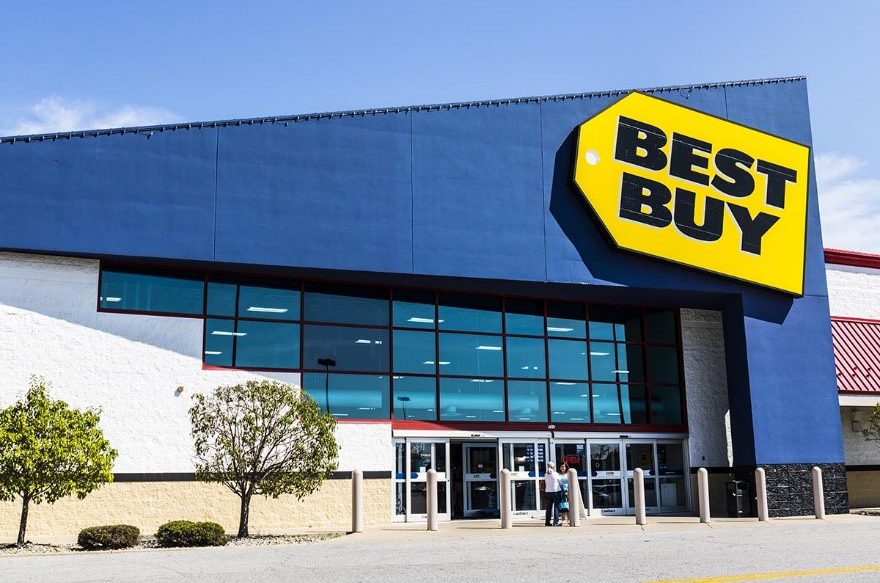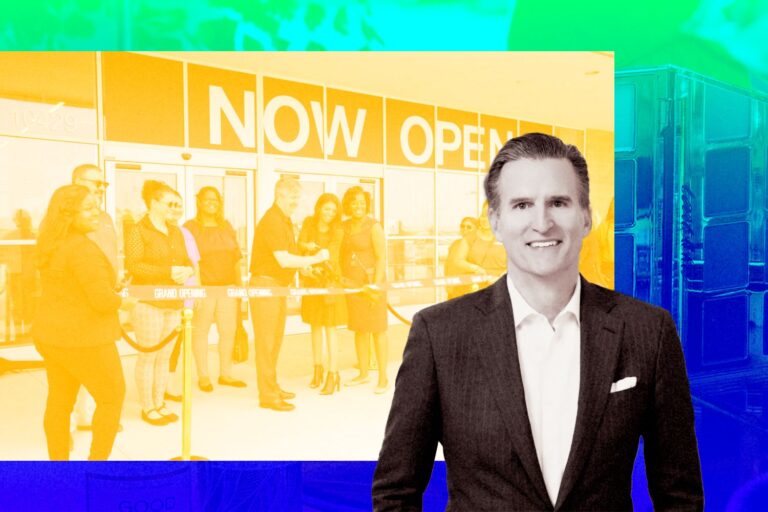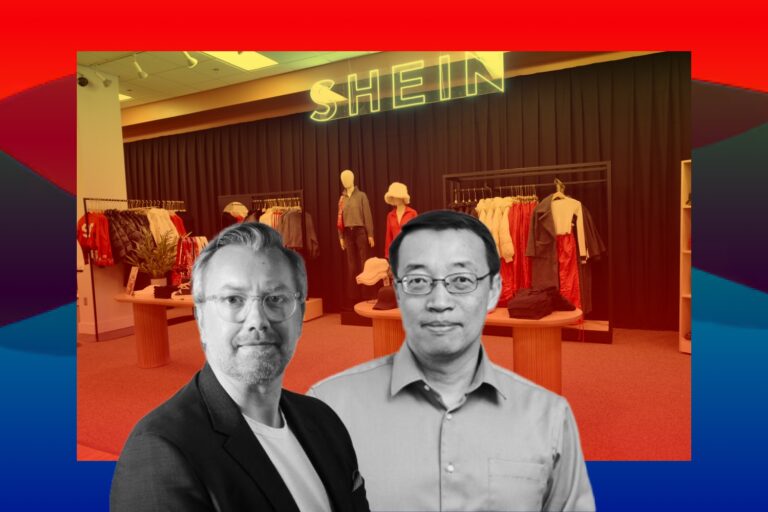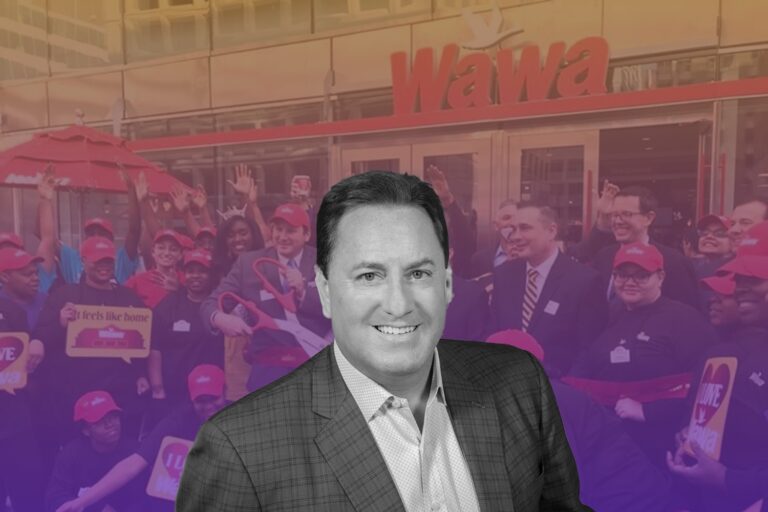Best Buy’s Turnaround in the Retail Apocalypse
Amazon, an online bookstore, now offers anything for home or business needs. With the strategy-low price and fast delivery, it has been the reason for other brick-and-mortar stores to shutter down. The country’s largest chain, Sears, had to file for chapter 11 bankruptcy in 2018, and it was one of many victims of this digital age. Those stores could not keep up with the monumental shifts in the way consumers shop, which leads to their falling behind Amazon.
One might think those traditional retailers cannot survive with the domination of Amazon. Yet, the electronics retailer Best Buy is still in the business, competing aggressively with Amazon and surprisingly thrive. It is reported that the company earned $42.1 billion in revenue in the fourth quarter of 2018, and there was an increase of 11% in dividends. That is surely a big reversion from almost ten years ago when Best Buy was trying to fight for its survival in the pressure of the online giant Amazon.
It is not good fortune that has helped the brand to survive. Indeed, it was the result of a smart strategy, which was implemented by the CEO, Hubert Joly. But before we jump into the part of what has saved Best Buy, let us take some time to learn more about the company’s history.
Best Buy’s Victorious History

The best Buy company was founded by Richard M. Schulze and his partner in the late 1960s. Initially, the store was named “Sound of Music” and only sold stereos, speakers, vinyl records, and other audio equipment.
The store immediately got success when its sales reached $160,000 in the first year. In 1970, Richard purchased the stakes of his partner, which made him become the sole owner of the store. Soon, he knew that his selling only stereo equipment would not have a long promising future when the target audience was decreasing. He decided to sell other appliances and VCR’s, which was the right move. His store was able to earn $9.5 million in revenue in 1982. That was a huge success for such a small store. Later, Richard renamed the store as Best Buy to make it more attractive to the customers and he also adopted the big-box format. Two years after it went public, the growth was slow at first in its first decade. As a public company, its stock only peaked at a height of $5.03 in late 1994, but over 20 years Best Buy became the largest US seller of electronics in the golden age of America’s big-box retailers.
In the 1980s and 1990s, the big stores modeled on warehouses rose to dominance and spread across segments. While Home Depot and Lowe’s became major home improvement stores, Petco and PetSmart ruled the pet category. The massive retail chain like Beth Bath & Beyond, Linens ‘n Things dominated in home goods. Best Buy at that time was considered the best in electronics retailers and growth was spectacular. Best Buy had 679 stores at the end of 2003, and by the end of 2009, it has 3889 stores. The sales climbed from roughly $21 billion to $45 billion over the same period, its stock jumped to above $50 a share.
The Fall of Best Buy
In the late 1990s, Amazon was starting to rise, and its deals appeared to be too good to refuse. The products at Amazon could be exactly like those in the stores, but often with lower prices and with free shipping. Moreover, with the nature of e-commerce, Amazon was able to skip the sales tax on its products, which created a huge difference in price.
In the beginning phase of Amazon, its success began to shake out smaller competitors such as CompUSA. Yet, it took a bit longer to defeat other bigger players like Circuit City, which was considered as Best Buy’s major competitor during its heyday. It has been in the retailing industry for more than 60 years and owned more than 700 stores in its glorious days. Yet, in November 2008, the company had to file for bankruptcy and due to the lack of credit, it was forced to liquidate. It closed its last 567 stores in 2009.
The collapse of Circuit City gave Best Buy a bit of advantage. While the industry sales decreased by 10% that year, but since the Circuit City began closing up stores, its customers shifted to Best Buy. As a result, Best Buy sales declined by only 5%. Besides, Best Buy also entered another zone: it had gone from being the biggest of several national electronics chains to the only one left. However, competing with the brick and mortar fellows like Circuit City was what Best Buy was used to. In contrast, Amazon was another kind of competitor, which made it hard for Best Buy to keep up with and thus, they fell behind.
By the time the Great Recession began to hit, Best Buy started to suffer. A slow housing market in 2007 impacted heavily on the sales of appliances and large home electronics. The consumers around the country also had less desire for spending. Besides, Best Buy also struggled to find the lowest prices possible so that a buyer can afford.
In 2008, Best Buy’s same-store sales declined by 1.3%. In the next year, the situation got a bit better, however, it started to fall again throughout the period from 2010 to 2013. The company went from pulling in $1.2 billion in net income in 2011 to $1 billion loss in 2012 and another $443 million loss in 2013.
The New Light for the Dying Business

In 2012, Hubert Joly joined Best Buy and replaced the CEO position of Brian Dunn, who had to resign due to the fact that he might have had a relationship with a younger female employee. The initial reaction of the Wall Street community and investors was who was Hubert Joly, and how he was going to save the business on the edge of extinction. Before, Mr. Joly used to work in McKinsey and Vivendi, where he proved the successful launch of the video game, World of Warcraft. With his talent, he was credited with the turnaround of Best Buy. And amazingly, he was able to do that with numerous strategies, which involved reshaping nearly every piece of the business.
Thanks to Mr. Joly’s strategy, the company surprised the world with its impressive turnaround. In detail, Best Buy shares have risen from a high of $44.66 per share in 2013 to $75.91 per share in 2019. Moreover, same-store sales have grown every year since 2015. The analysts believe that the company is the role model for other retailers showing how businesses can steer through a competitive in a rapidly changing technology-fueled retail market.
Best Buy’s Secrets to Thrive in the Amazon Age
what is it in the strategy that was so powerful and could transform a dying business into the rising one? The answer lies in the five keys that will be described carefully below.
#1: Match price
As mentioned above, Mr. Joly joined Best buy when it was struggling hard to survive. The company’s systems were out of date and several Best Buy stores were losing money. The products like new CD and DVD releases which used to be best-selling products then were becoming obsolete.
The “showrooming” was introduced by most big-box retailing stores at that time with the hope that the customers could experience the products before buying. In fact, the customers came to “showrooming” merely to test the products before buying them online. To combat the “showrooming” and convince the customers to purchase the products from Best Buy right after their testing, Mr. Joly introduced a guarantee “price-matching”.
Mr. Joly said: “Until I match Amazon’s prices, the customers are ours to lose”
This matching price strategy costs Best Buy real money, yet the customers have a reason to stay in the store and this also gives Best Buy an advantage to compete with other competitors.
#2: Focus on humans

Mr. Joly realized that to compete with Amazon, which has invested billions in building a speedy delivery system and used drones to make the process more efficient, then Best Buy needed to focus on the field that robots can’t do well, which is the customer service.
After a month as the CEO of Best Buy, Mr. Joly paid a visit to the stores near Minnesota headquarters to ask rank-and-file employees about the obstacles that they faced. Among their difficulties, one which seemed to be serious was the internal search engine that was returning bad data about which items were in stock.
Knowing the issue of employees, Best Buy fixed the search engine. The company also restarted the much-loved employees discount and concentrated on restraining its employees so that they could equip themselves with enough knowledge about the entirely new categories of electronics, such as virtual reality headsets and smart appliances.
Additionally, Best Buy also has an army of experts to help customers with any issues of the appliances. This army is called Best Buy’s Geek Squad. Sometimes, the customers needed help if they intended to purchase any big and expensive gadgets. Thus, Best Buy’s Geek Squad solved the problem by launching an adviser program that helps the customers to get free in-home consultations about the products as well as the installation part. This special service started as a pilot program in 2017 and is now being rolled out nationwide.
“That Best Buy invested in people, and consumer experience was a right move, which helped the company come through the valley,” said Peter Keith, a retail analyst with Piper Jaffray.
#3: Turn brick-and-mortar into showcase-and-ship
As Mr. Joly worked at Best Buy, the online system of the company was totally separated from the stores. So, when the customers ordered any products online, they needed to wait for it to ship from the central warehouse. And if the product was out of the stock in that warehouse, then the customer was unlucky that day.
Mr. Joly believed that this problem needed to be fixed. He realized that the big-box stores could function like mini-warehouses for their surrounding area. This means that if a customer places an order on its website, then the item will be delivered from the nearest stores. Although this is such a small change, this method turns out to be so effective since it not only increases Best Buy’s available inventory but also shortens the delivery times.
Furthermore, Best Buy also started to collaborate with big tech companies like Samsung, Apple, and Microsoft to display their products within the stores. Acknowledging that putting those companies’ products together on shelves is not going to be professional and makes it hard for the customers to decide. Thus, the company allows each brand to set up its own dedicated kiosks. For example, Apple’s area in a Best Buy store contains the wooden tables and is designed as a mini Apple store. This concept was borrowed from department stores, and it has created a lucrative new revenue stream. Even Amazon, its biggest competitor, also set up kiosks in Best Buy stores to show off its voice-activated Alexa gadgets.
An advantage for Best Buy is that the company is the last man standing in the electronic retail industry. The big-box rivals such as Circuit City, Radio Shack, HH Gregg all have gone bankrupt or shut down completely. This implies that if Samsung wants to display its newest lines of smartphones in a big-box electronics store, then it has only one choice.
#4: Cut costs quietly
This cutting cost strategy seems so familiar for every business searching for a turnaround. With Mr. Joly, Best Buy also implements this strategy but as quietly as possible. He gradually let the leases expire for the stores which were unprofitable and consolidated his overseas divisions. Besides, he cut down on the numbers of people that were not so necessary for the growth of the company. In 2014, a layer of middle managers was trimmed, and 400 Geek Squad employees were reassigned within the company. Yet he did not make this publicly loud, which could avoid the employee dissatisfaction and creating a sinking-ship vibe.
“Cutting costs by taking people out was the last solution because capturing the hearts and minds of the employees should be put as a priority”, said Mr. Joly.
Additionally, more creative saving cost methods were also carried out. Once, Best Buy noticed that there was a high number of flat-screen TVs that were being dropped in its warehouses. To tackle the problem, the company rearranged the handling process by reducing the numbers of TVs that were picked up by a clamp lift, then it added new carts with the purpose of preventing TV boxes from falling over. As a result, the company saw a positive sign which was less broken inventory and bigger profits.
#5: Stay humble

It is believed that Best Buy has benefited from some good fortune. Firstly, their specialization in products like big-screen TVs, high-end audio equipment. These are big-ticket items that most customers might feel uncomfortable buying online from a website. Secondly, numerous big rivals of Best Buy have gone out of business, which turns it into the only electronics player in the industry. Finally, the big tech vendors like Apple and Samsung are constantly releasing the new expensive blockbuster gadgets, which increases the variety of products for Best Buy to sell.
Mr. Joly knows that although recently Best Buy has got some advantages, it is not out of the woods yet. To become more successful in the long run, it will need to continuingly cut costs and match prices. One of the fierce rivals of Best Buy, Walmart, invested billions of dollars in the acquisition of e-commerce companies like Jet and Bonobos intending to expand their digital field. While Amazon has been interested in brick-and-mortar retail, thus it decided to buy Whole Foods and is moving into Best Buy’s home installation and services market.
Mr. Joly keeps an optimistic mind about Best Buy’s chances against these giants, but he is not ready to celebrate yet. He said: “Arrogance might have existed in your bones, but if you’ve had a near-death experience, those arrogant behaviors would have just disappeared forever.”
For now, Best Buy has found a way to dig deep into what it knows, which is electronics. It also takes advantage of its strengths and stores and services while strengthening its online presence. The analysts are optimistic about the future of this massive retailer. Yet this is the era of unprecedented disruption, there are several brick-and-mortar stores going out of business. Thus, to stay longer in the game, Best Buy needs to create more difference to keep it out-standing among its rivals, especially Amazon.









